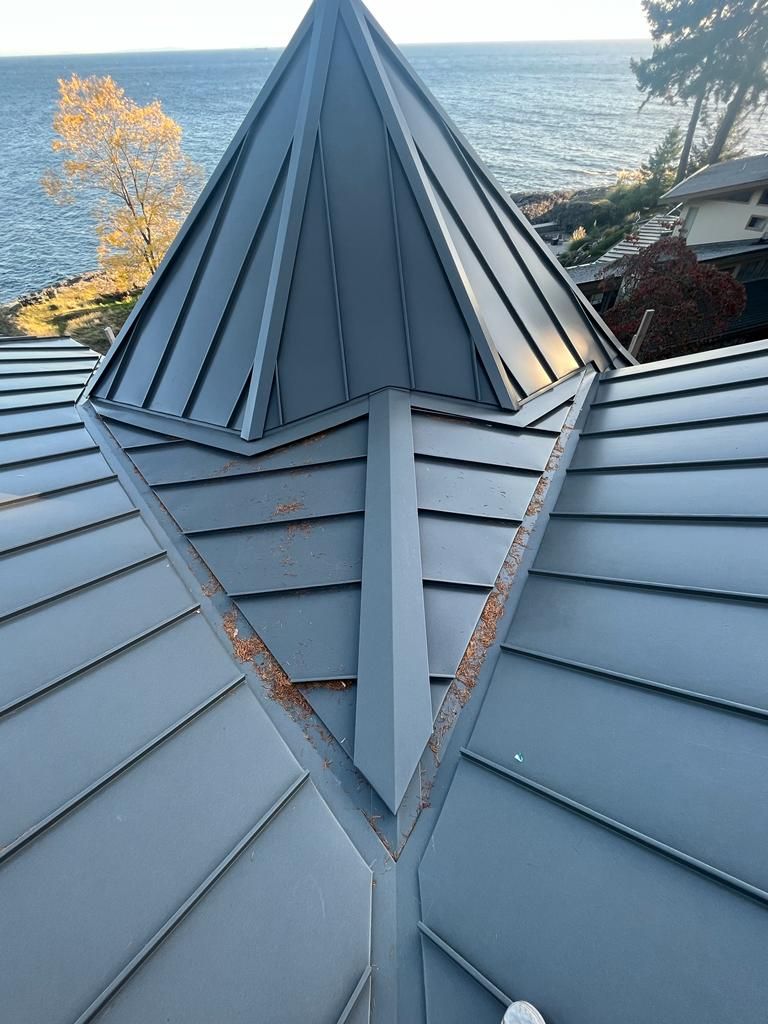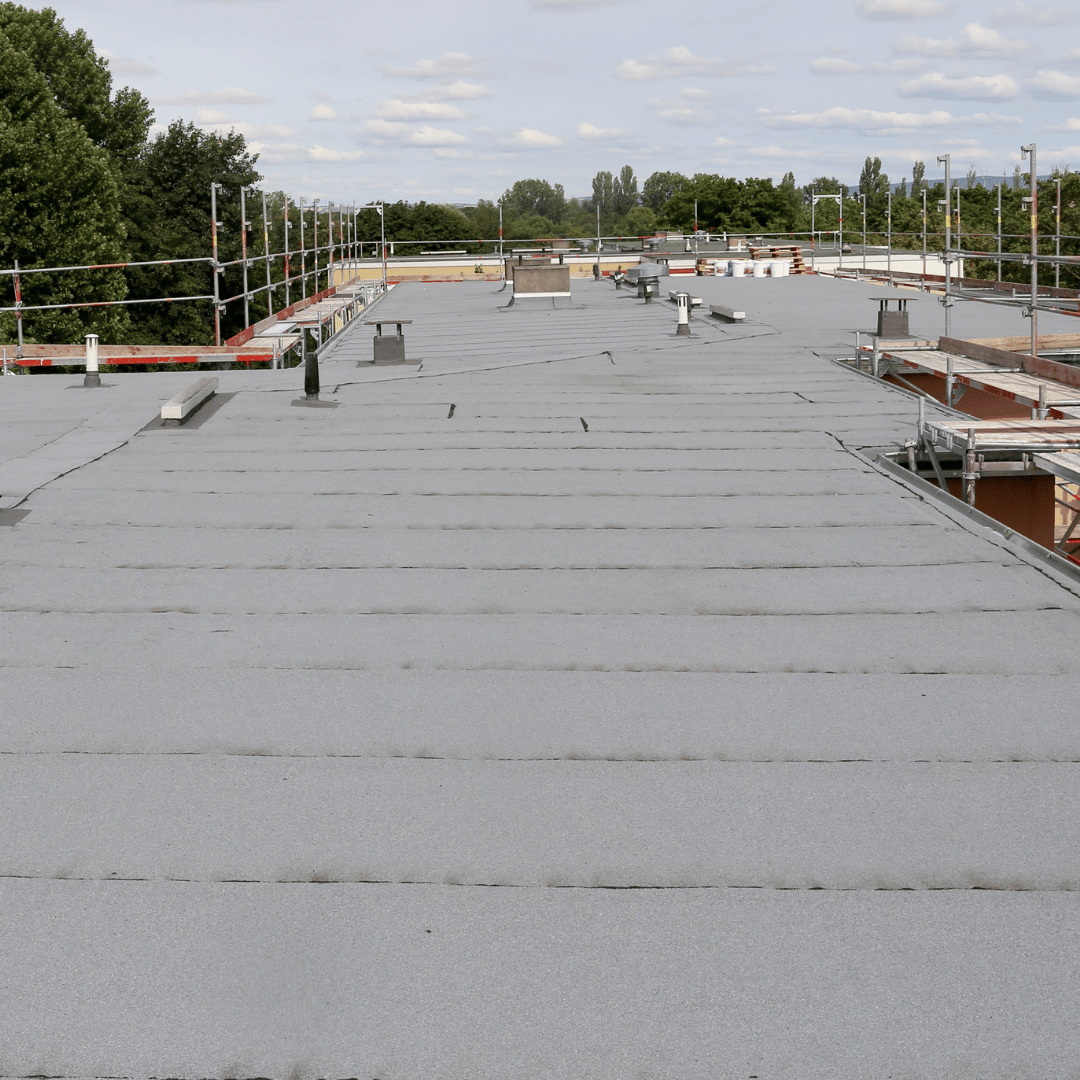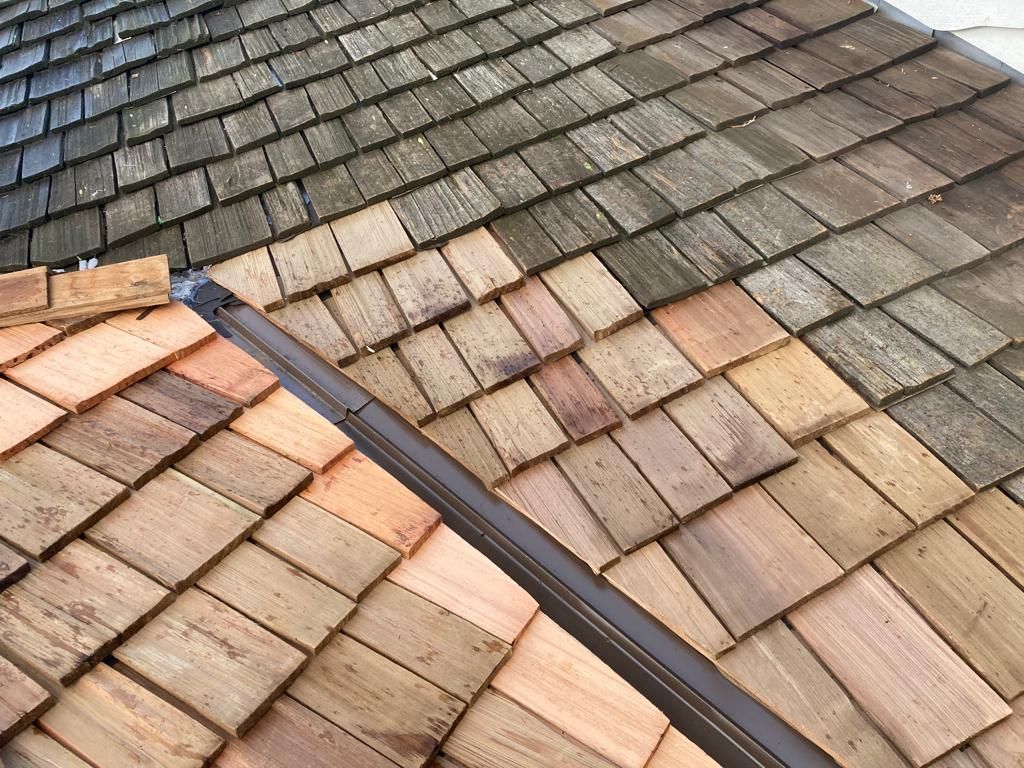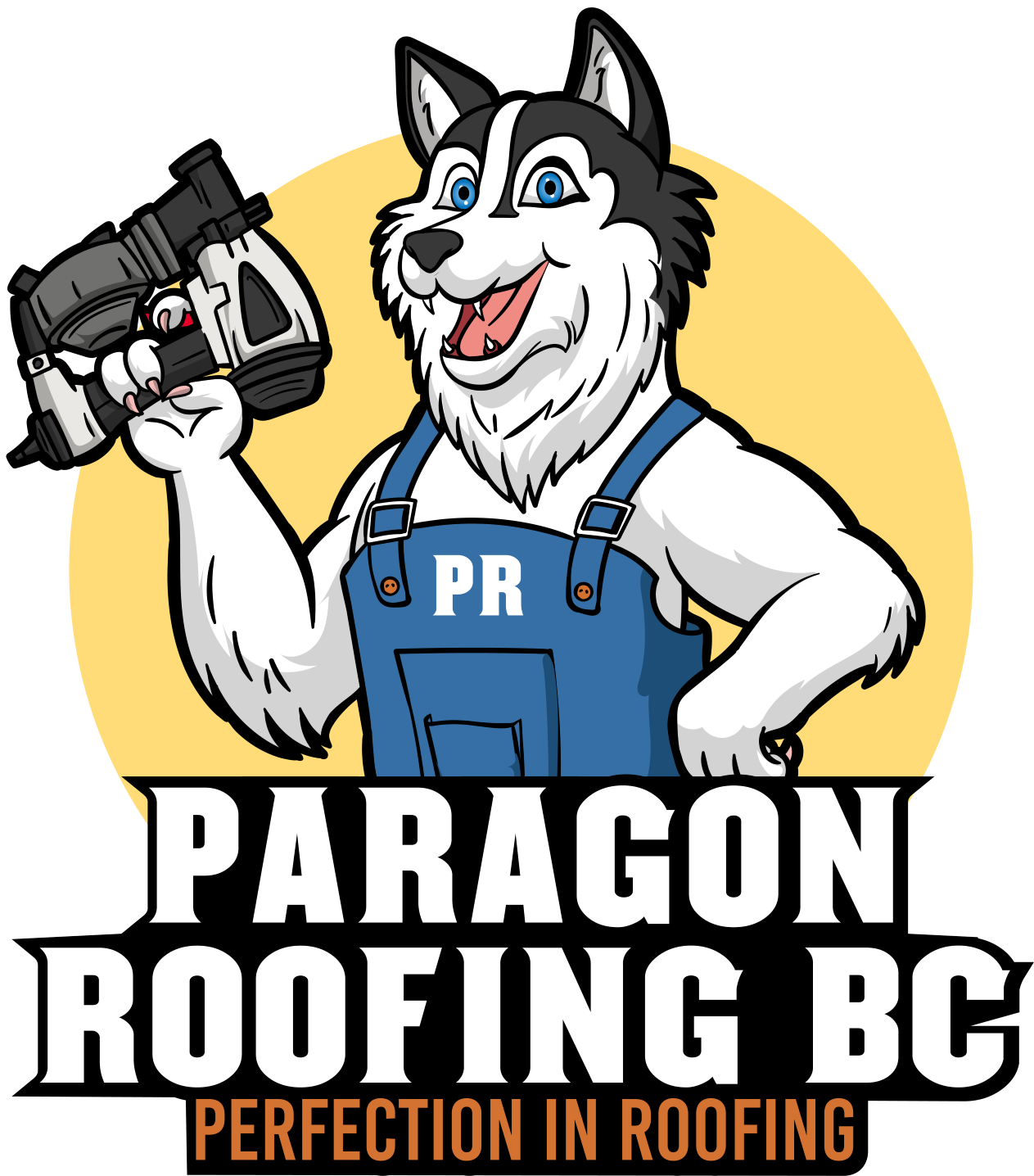Converting a Flat Roof to a Low-Slope Pitch: Pros, Cons, and Costs in Vancouver
Change can be Good, Here are Options for Roof Transformation in Vancouver!
THE REALITY OF HARSH WINTER CONDITIONS IN VANCOUVER
I’ve been around enough Vancouver winters to know our weather isn’t just mild rain and the odd dusting of snow. Sometimes, we face storms so intense that you’d think we lived somewhere far colder. Winds whip around, temperatures can dip below freezing at night, and a wet snowfall can suddenly freeze and expand in every crevice of your roof. When fall transitions into winter, there’s always that moment I look at the sky and think, “Is this the year the roof issues start early?” Our region’s climate can feel gentler than, say, Northern BC or the Prairies, yet wet, heavy snowfalls, abrupt downpours, and frequent freeze-thaw cycles genuinely push roofs to their limits.
Many Vancouver flat roofs experience water pooling, surprise leaks, and drips in the least-expected spots. Gutters clog with wet leaves or pine needles from our abundant greenery, creating water overspills that can saturate walls and foundations. After years of calls from homeowners, I can attest that our unique mix of cool rains, moist air, random snowbursts, and unpredictable temperature swings can turn minor roof vulnerabilities into major crises—especially on flat roofs that haven’t seen consistent maintenance.
EXPERIENCES: WINTER ROOF DISASTERS WE’VE HELPED RESOLVE
We once got a frantic call from a homeowner in Surrey, who woke up to a soggy carpet in the bedroom above the garage. He initially thought someone had spilled water. Turns out, the night’s snowfall quickly melted, then refroze into icy ridges. Meltwater found its way under a seam along the parapet. By morning, the water had slowly seeped through drywall, soaking the subfloor. We cleared the ice, sealed the compromised flashing, and set up fans inside to mitigate further damage.
Another episode in Delta involved a family whose holiday get-together was interrupted by an ominous drip in the living room. The father had climbed a ladder to check the roof earlier that week but missed a partial tear in the membrane. A sudden windstorm with lashing rain hammered that vulnerable spot. Water pooled where it couldn’t drain properly, then poured in. We used a quick patch to stop the immediate leak, and later helped them upgrade their drains to handle future storms.
Once in Vancouver, a small commercial property had a flat roof older than some of the employees who worked there. The manager noticed a sag in the middle after a heavy December snowfall. We arrived to see water pooling at the center of the building, forming what looked like a shallow pond. The drain in that area was clogged with soggy leaves and plastic debris. Once the water was pumped away, we found significant moisture damage below the top layer. We patched the tears, replaced a couple of rotted sections of the decking, and discussed a slope retrofit. They ultimately decided a low-slope conversion would spare them future headaches.
These stories highlight the immediate risks that come with a flat roof in the Lower Mainland. Sometimes you can get by with patches or better drainage. But if your roof is repeatedly under siege, you may want the peace of mind that comes with a low-slope pitch.
EXPERTISE: STATISTICS ON WINTER STORMS AND ROOF FAILURES
Local meteorological data records 3 to 5 major winter storms annually in the Lower Mainland. These storms can bring torrential rains exceeding 40 mm in a 24-hour period or up to 20–30 centimeters of wet snow. While our snow rarely lingers for weeks like in colder provinces, the intense moisture content makes it extremely heavy. Additionally, from November to February, we typically see 10–15 moderate storms with rainfall above 30 mm or winds hitting 50–70 km/h, enough to loosen old flashing, lift shingles on pitched roofs, or find even the smallest cracks in a flat roof’s membrane.
Insurance data often shows a 25% spike in roof-related claims during these months. Some studies suggest that in places with high rainfall like ours, flat roofs have a 40% increased risk of leak-related issues compared to pitched roofs—primarily because water lingers on flat surfaces, working its way through worn seams. Freeze-thaw cycles compound the problem, causing cracks in membranes or sealants to expand. Add Vancouver’s near-constant humidity, and even minor vulnerabilities can turn into big headaches.
AUTHORITY: LOCAL BUILDING CODE NOTES FOR SNOW LOADS & HEAVY RAINFALL
The BC Building Code addresses structural loading for rain, snow, and wind. Even though Metro Vancouver’s snow loads are lower than in many Canadian regions, our heavy, slushy snow is more stressful on a roof than the powdery stuff in colder climates. The code specifies roof assemblies must be designed to safely handle these loads over time. For flat or low-slope roofs, you generally need a minimum pitch of about 2% so that water drains away instead of ponding.
Another crucial point is ensuring adequate drainage. Municipal inspectors in Vancouver, Richmond, Surrey, and so on might require overflow scuppers or secondary drains. If your primary drain becomes blocked during a storm, water needs an alternative exit to avoid structural overload. Any major structural modifications—like switching from flat to low-slope—will involve engineering reviews to confirm the existing joists or rafters can handle added framing and any changes to the load path.
THE PROBLEM WITH FLAT ROOFS
- Water Pooling
A slight dip or sag can hold water. Over weeks of standing moisture, that area weakens from the weight, intensifying the dip. - Drainage Systems That Need Ongoing Attention
Flat roofs rely heavily on scuppers, gutters, or internal drains. Leaves, sticks, pine needles, or everyday debris can clog these pathways in a heartbeat. You ignore it for a week or two, then the next storm hits, and suddenly water is all over the place. - Membrane Vulnerability
UV radiation, temperature swings, and persistent moisture break down membrane seams. Once a seam is compromised, water infiltration can escalate quickly. - Temperature Fluctuations
Rain can transition to snow, then back to rain, all in the same day. That freeze-thaw cycle is brutal on roof materials—particularly older membranes on a flat surface.
These risks push many homeowners to explore a slight pitch. Even a gentle slope can spare you from chronic leaks and the dread of waking up to water dripping inside.
CONVERTING A FLAT ROOF TO A LOW-SLOPE PITCH: PROS, CONS, AND COSTS
PROS OF A LOW-SLOPE PITCH
- Improved Drainage
Even a modest slope helps water flow toward gutters or scuppers. This reduces the amount of time water spends on your roof, which directly curtails leaks and rot. - Reduced Snow Load Stress
Snow can slide off more efficiently, or at least melt faster, rather than sitting and adding weight. - Longer Membrane Life
With less standing water, your roofing material has fewer opportunities to degrade prematurely. - Easier Problem Detection
On a slope, water doesn’t linger, so if you see a puddle, you know right away something’s not draining. That helps pinpoint trouble spots. - Potential Aesthetic Boost
Some homeowners appreciate a subtle pitch, which can blend modern design with practicality.
CONS OF A LOW-SLOPE PITCH
- Higher Initial Expense
Conversions aren’t cheap: they involve new lumber, possible structural work, and upgraded roofing materials. - Structural Reinforcement
Adding slope may demand sistering joists or installing new rafters. If the existing structure is weak, you’ll need more reinforcement. - Bylaw or Height Constraints
Certain neighborhoods cap building heights. Even a small increase might cross a threshold. - Ventilation Adjustments
Changing the roof line can alter airflow in the attic or ceiling cavity, requiring new venting strategies. - Longer Project Timeline
Plans, permits, engineering reviews, and weather delays can stretch out the process.
COST FACTORS AND GENERAL RANGES
- Material Selection
Torch-on, TPO, PVC, or EPDM each come with different price tags. Insulation upgrades add to the total. - Labor
Skilled roofing crews and potential engineering or architectural fees factor in. Vancouver’s labor rates may be higher than in smaller markets. - Permits & Inspections
Municipal fees vary. Conversions typically undergo more rigorous checks than a simple re-roof. - Ballpark Figures
Smaller conversions might run $15,000–$25,000. Larger or more complex projects involving structural overhauls can exceed $30,000–$60,000 or even more.
WHY A LOW-SLOPE ROOF MIGHT SUIT VANCOUVER
Our climate offers a patchwork of moderate days interrupted by sudden rain or snow events. We rarely have long stretches of freezing temperatures, but we do have intense moisture loads. A gentle slope means water drains off before it can pool and infiltrate. If you love a modern, streamlined roof profile but dread the maintenance hassles of a true flat roof, a low-slope design typically strikes a happy medium.
TRUSTWORTHINESS: TRANSPARENT SOLUTIONS AND WHEN TO SEEK HELP
DIY MAINTENANCE TIPS
- Check Drains & Gutters
Clear out leaves, pine needles, and debris before the heavy rains of fall and after winter storms. - Inspect Membrane & Flashing
Look for bubbling, peeling, or separated seams. Early detection can stop leaks in their tracks. - Careful Snow Removal
Use a roof rake or soft-bristle broom. Aggressive shoveling can rip membranes or loosen flashing. - Trim Overhanging Trees
Branches can scrape membranes during high winds, and dropping leaves or pine cones clog drains fast. - Document Changes
Take photos when you spot a new crack or puddle. These records help gauge whether a problem is getting worse.
WHEN A PRO IS NECESSARY
- Structural Weakness
Noticeable sags or cracks in ceiling drywall suggest underlying concerns needing professional assessment. - Multiple or Persistent Leaks
A single drip might be minor, but repeated leaks point to systemic failures. - Membrane Over 20 Years Old
If you’re patching a roof that’s past its prime, it may be more cost-effective to convert. - Permitting & Code Compliance
Major changes need structural calculations and official approvals. - Chronic Ponding
If the same water puddle returns after every storm, a more comprehensive fix is usually needed.
STEP-BY-STEP OVERVIEW OF A FLAT-TO-LOW-SLOPE CONVERSION
- Inspection
A thorough review of the membrane, deck, structural supports, and drainage pathways. - Design & Engineering
Determining the new pitch, required framing modifications, and exact load calculations. - Permits
Submitting plans to your municipality (Vancouver, Surrey, Delta, etc.). Expect some back-and-forth if structural changes are extensive. - Removal & Reinforcement
Stripping old membrane, repairing any damaged sheathing, and adding new rafters or sistering joists to achieve the desired slope. - Insulation & Ventilation
Upgrading to meet current energy codes, ensuring proper airflow to avoid moisture buildup. - Membrane Installation
TPO, PVC, torch-on, or EPDM, installed and sealed along every seam and penetration. - Final Inspection
Municipal checks for code compliance. Then you’re set.
EXPERIENCES: QUICK ROOF RESCUES IN WINTER
A homeowner in Burnaby faced a drama when her skylight turned into a water feature after a night of driving rain and heavy wind. Water found a gap in the skylight’s flashing and seeped inside. We arrived, did an emergency seal, and eventually recommended adding a slight pitch around that skylight zone. That small adjustment guided water away from the skylight itself.
In New Westminster, an aging home had a flat roof nearing three decades old. During a December cold snap, the snow piled up, partially thawed, then refroze. Ice forced open an old seam, leading to a slow leak into the master bedroom. We cleared the ice, patched the seam, and braced a portion of the roof structure. After the winter ended, the owners decided to invest in a gentle roof slope, figuring it was better to address the root cause than keep patching.
Richmond, with its low elevation, sees frequent flooding concerns. One homeowner realized just how vulnerable a flat roof can be when an atmospheric river event unleashed more rain in a day than we might see in a typical week. Their clogged drains meant water built up fast. We unclogged the drains, cleared standing water, and discovered sections of soggy insulation under the membrane. A thorough cleanup and partial membrane replacement stabilized the roof. Eventually, they opted for a low-slope conversion to prevent a repeat scenario.
COMMON MATERIALS FOR LOW-SLOPE ROOFING
- Torch-On (Modified Bitumen)
Popular on many Metro Vancouver roofs. It’s strong, but installation requires skillful torch application. - TPO
Known for heat-welded seams and decent reflectivity. The white surface can help reduce summer heat absorption. - PVC
Single-ply, heat-welded, and resistant to chemicals or pollutants that might land on the roof. - EPDM
A synthetic rubber that stays flexible across temperatures. Commonly adhered or ballasted.
Each option has different price points and lifespans. Our damp climate makes proper installation of whichever system you choose vital.
MAINTAINING YOUR LOW-SLOPE ROOF
- Periodic Inspections
Even new roofs benefit from an annual check. Spot a tiny rip before it expands into a costly ordeal. - Prompt Repairs
A membrane bubble or peeling edge can quickly invite water in if left untended. - Ventilation Checks
This is often overlooked. Inadequate airflow can cause condensation on the underside of the deck, leading to hidden mold or rot. - Gutter & Scupper Cleaning
Leaves, branches, and other debris love to block scuppers. If you have overflows in your gutters, take it seriously. - Scheduled Maintenance Plans
Some homeowners book a pro to check the roof in spring and fall. They catch micro-cracks, clear drains, and reassure you everything’s shipshape.
ADDITIONAL AUTHORITY: BC BUILDING REQUIREMENTS
- Snow Load Calculations
Though our overall snow load is lower than many parts of Canada, the code covers that heavy, wet snow factor. - Drainage
Primary and secondary drains (or overflow scuppers) help in storms. - Energy Efficiency
Under the BC Energy Step Code, re-roofing can trigger insulation upgrades. R-20 to R-30 is common for roof assemblies, improving your home’s overall heat retention.
DECIDING IF A LOW-SLOPE CONVERSION IS RIGHT FOR YOU
- Assess Age & Condition
If your flat roof is relatively new and trouble-free, you might delay. But if you’re consistently dealing with leaks, conversion may pay off in the long run. - Long-Term Goals
Plan to stay for many years? The investment can offer peace of mind. Looking to sell soon? A robust, leak-free roof can be a strong selling point. - Budget
Collect a few detailed estimates, evaluate structural concerns, and determine what fits your finances. - Neighborhood Aesthetics
Some areas have design guidelines, but a slight pitch is usually subtle and blends in well.
DETECTING HIDDEN ISSUES
- Thermal Imaging
A specialized camera can reveal cold or hot spots indicating moisture intrusion behind walls or under membranes. - Core Sampling
A small sample of roofing layers clarifies if the insulation is damp or if there’s underlying rot. - Infrared Drone Surveys
Larger buildings sometimes rely on drone technology for a sweeping overview, especially helpful for commercial roofs. - Interior Inspections
Attic or top-floor checks can reveal water stains, mold, or compromised wood. - Consult an Engineer
Any signs of structural sagging or unusual deflection might warrant a thorough professional review.
NEIGHBORHOOD-SPECIFIC NOTES
- Vancouver Proper
High property values may let you recoup a significant chunk of your investment in a roof conversion if you sell. Some older houses also have heritage guidelines, so double-check with the city. - Surrey
Rapid development has brought many builder-grade roofs. If you’re experiencing recurring issues, a slope conversion can be a worthy upgrade. - Delta
Wind exposure can blow more debris onto your roof, clogging drains. A pitched design helps channel that debris off. - Richmond
Low elevation and areas prone to waterlogging mean robust drainage is non-negotiable. A low-slope roof can make a noticeable difference. - Burnaby & New Westminster
A mix of older and newer homes; many older flat roofs would benefit from updated insulation and slope adjustments.
FREQUENTLY ASKED QUESTIONS
- Do I need to move out during the conversion?
Typically no. You’ll deal with some noise and maybe restricted yard or driveway access, but most people stay put. - Will it look drastically different from the street?
Not necessarily. If the slope is gentle, many casual observers might not even notice the change. - Can I add skylights or solar panels later?
Yes, just ensure proper flashing and sealing. Low-slope roofs are compatible with both, especially if installed with the slope in mind. - How long does a conversion usually take?
From permit submission to final inspection, a few weeks to a couple of months. Weather conditions and scheduling can affect the timeline. - Is maintenance more expensive on a low-slope roof?
Generally not. Because water drains more effectively, you might spend less on repairs and patches long-term.
POST-CONVERSION PEACE OF MIND
Once your roof conversion is complete, the next winter storm won’t feel nearly as stressful. Instead of anxiously listening for drips or dreading a call from home when you’re at work, you’ll hear the rainfall draining away as intended. Of course, no roof is magically maintenance-free. Occasional checks and cleaning remain necessary. Yet a well-installed low-slope roof in Vancouver’s climate stands as a safeguard against that dreaded day you spot watermarks on the ceiling.
Many homeowners describe a sense of relief once they remove the constant worry of leaks. Some say it let them enjoy Vancouver’s famously rainy days without fear of interior water damage. Others appreciate that a well-designed low-slope roof retains much of the modern aesthetic they liked about their flat roof, while eliminating the biggest risks.
KEY TAKEAWAYS
- Flat roofs often struggle with ponding, membrane stress, and freeze-thaw damage in Metro Vancouver’s wet climate.
- Our region typically sees multiple severe or moderately severe storms each winter, causing up to a 25% spike in roof-related insurance claims.
- Local building codes require handling snow loads, proper drainage, and adequate insulation. Even slight slopes of 2% or more can meet these requirements.
- A low-slope roof reduces water pooling, extends membrane life, and alleviates the stress of heavy, wet snow accumulations.
- Conversions require an upfront investment, including lumber, labor, insulation upgrades, and permit fees.
- Smaller, straightforward conversions might start around $15,000–$25,000. Larger or more structurally complex projects can surpass $30,000–$60,000.
- Basic maintenance—like clearing gutters and checking seams—can be DIY. Structural reinforcements or membrane replacements typically require professional expertise.
- Even with a new low-slope roof, regular inspections remain invaluable. They catch small issues early, keeping your interior space dry and problem-free.
BUILDING TRUST THROUGH EXPERIENCE, EXPERTISE, AUTHORITY, AND TRANSPARENCY
I’ve seen the aftermath of Vancouver’s icy deluges, wind-lashed rains, and slushy snowstorms on countless flat roofs. The knowledge gleaned from hands-on work—in everything from minor patch jobs to full-on collapses—drives me to emphasize preparedness. With every visit, I’m reminded that a solid roof is often the only thing preventing weather from wreaking havoc inside a home.
Expertise in roofing means studying local weather patterns, understanding structural limits, and keeping an eye on new materials and techniques. Installing a membrane incorrectly or overlooking code requirements can lead to preventable disasters. Applying that knowledge responsibly is part of delivering a roof that stands firm, whether it’s a gentle slope or something steeper.
Authority comes from referencing the BC Building Code and municipal bylaws. These regulations aren’t arbitrary; they’re grounded in years of data on loads, drainage, and climate. For a safe, lasting roof conversion, they provide essential guardrails.
Trustworthiness hinges on straight answers: outlining the costs, explaining the pros and cons of low-slope conversions, and admitting there’s no one-size-fits-all solution. Some homeowners may find that simpler repairs still have life left in them. Others may decide that investing in a full conversion prevents constant worry each winter. Whatever the choice, being clear about expectations and next steps helps make the process smoother.
When you combine real-life experience, genuine expertise, strong references to local authority, and open, honest communication, you build a foundation of trust—not unlike a well-built roof that protects you from the elements. It’s about giving people solid knowledge to make informed decisions for their homes and families without over-the-top promises or scare tactics.
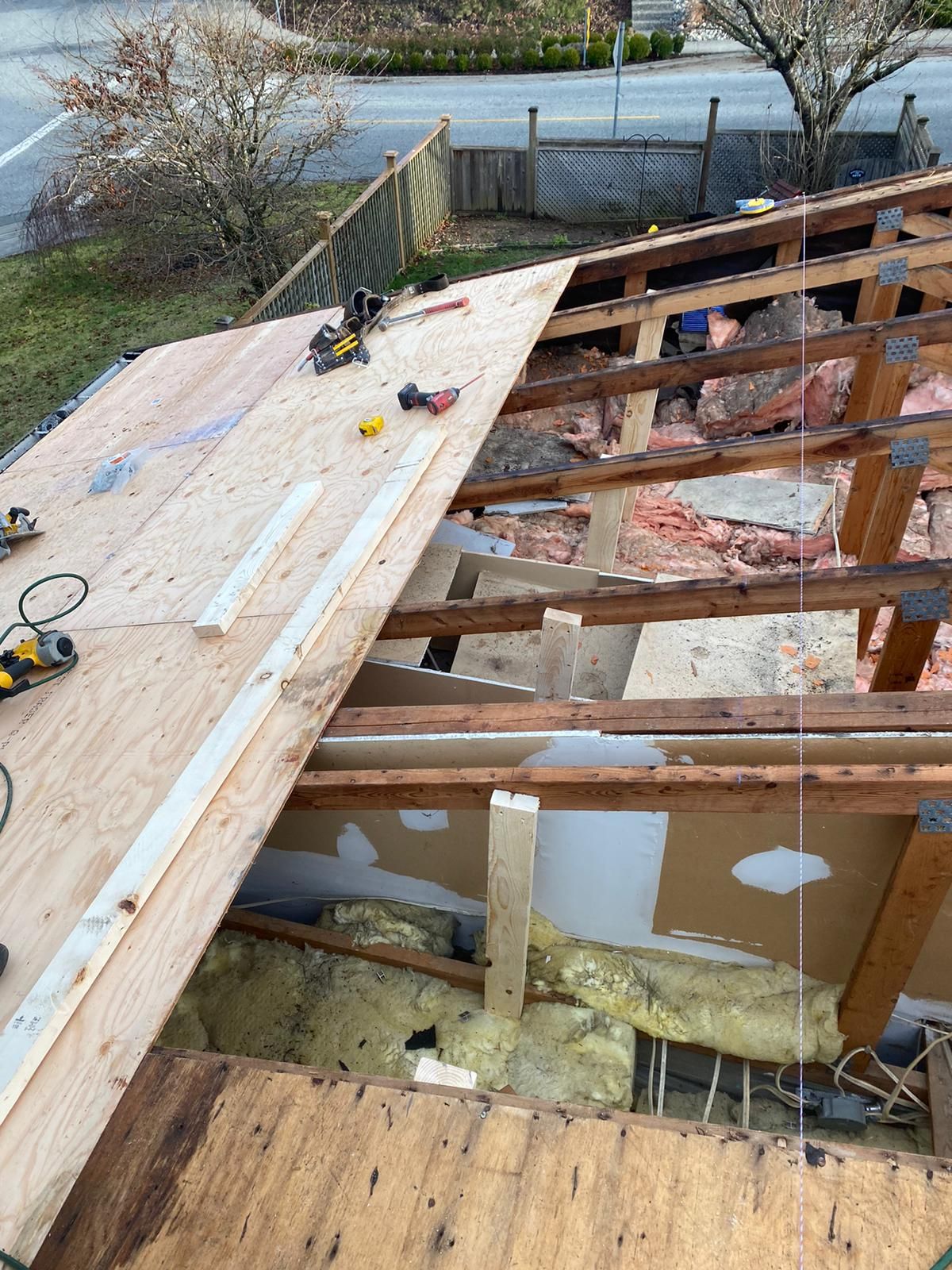
Our Roofing Blog
Have more questions about roofing?
Check out our FAQs or give us a call today to speak to an expert roofer in Vancouver Lower Mainland, BC. We're here to help our neighbours make educated decisions about their roof. For our team, we value helping clients save money while making their roofs last.

